Buying a treadmill is one of the best ways to invest in your personal fitness. It provides a convenient way to make exercise a part of your daily life, removing some of the typical barriers to running such as poor weather and lack of time.
When you have a treadmill, you can exercise whenever you want, at a pace that suits you and in the comfort of your own home.
But buying a treadmill for the first time can be baffling! There are so many different types of treadmills on the market – with so many models in each category – that picking the right one for your needs isn’t always easy.
That’s why we’ve put together this useful guide to help you understand the different machines on offer and how they compare. Read on to discover the types of treadmills you’re likely to encounter in your search and the features to expect from each.
We’ve also picked our favorite model in each category, and listed the reasons we recommend them.
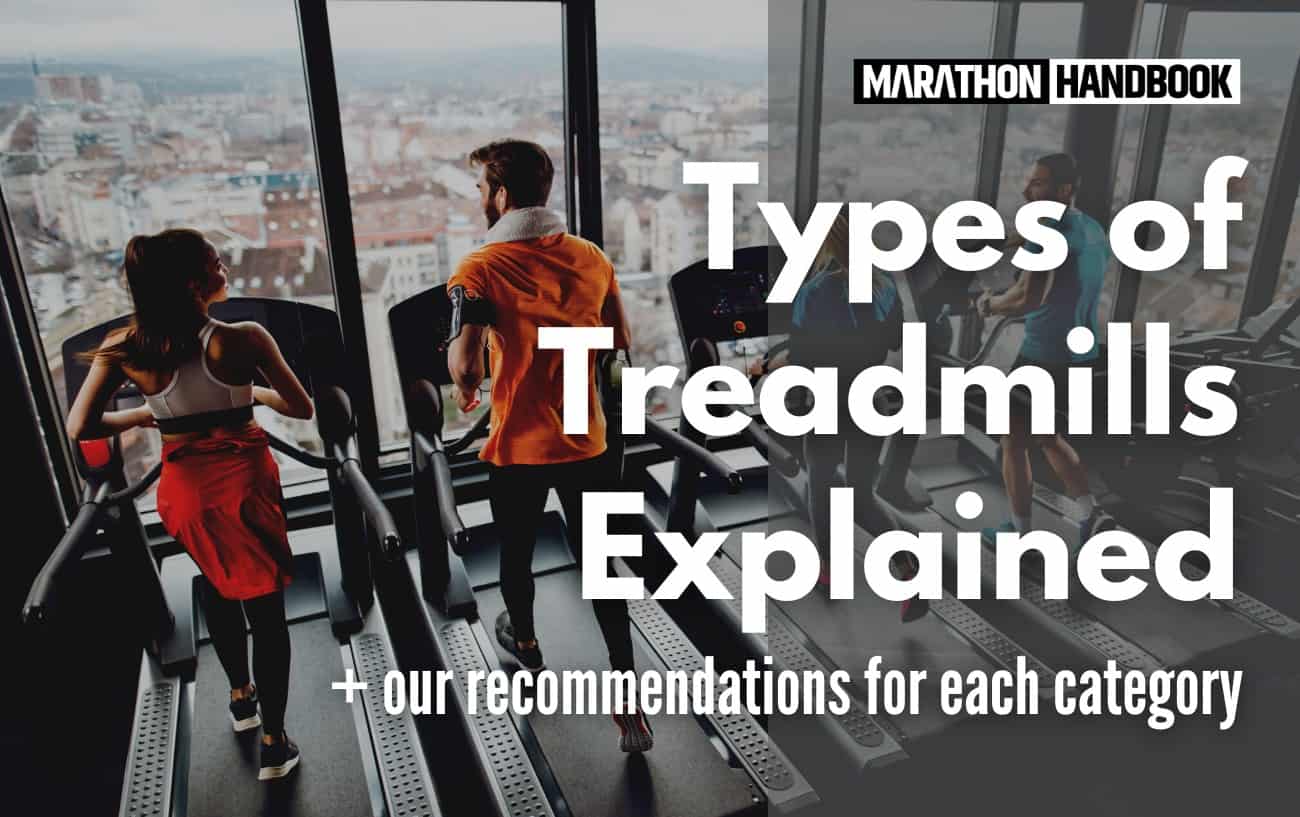
6 types of treadmills Explained
#1: Manual Treadmills
As their name implies, manual treadmills don’t use electricity. Instead, it’s your running or walking action that gets the belt moving! That makes these the most basic – and usually the cheapest – types of treadmills available.
There are many advantages to using a manual treadmill.
Aside from being very affordable, they are lightweight, eco-friendly, small in size, and often designed to fold away for storage. As the belt is propelled by your running action, it won’t start to move until you do. Because of this, many people feel that using a manual treadmill is safer and more natural.
In many ways, running on a manual treadmill gives you a better workout than using a motorized version. That’s because all the power is coming from you rather than the machine.

But not everyone finds this an advantage.
Due to the incline required to keep the belt moving, manual treadmills have traditionally been considered hard work. If motivation isn’t your strong point, you may find a manual treadmill less enjoyable to use than a motorized model.
Other disadvantages include a smaller running deck and a lower weight capacity than sturdier, motorized machines.
– Best Manual Treadmill – Sunny Health & Fitness Force Fitmill –

With a roomy running deck, adjustable magnetic resistance, and 13.5% incline, this is a treadmill designed to burn some serious calories.
It feels much sturdier than many manual models and features dual flywheels that ensure the belt moves smoothly and quietly.
Pros:
- Folds easily, with a soft drop hydraulic mechanism for safe unfolding
- Heavy duty frame and generous 300 lb weight capacity
- Non-slip, sweat-resistant rails that allow you to run or walk in various positions
Cons:
- The incline is not adjustable
- The warranty is relatively short
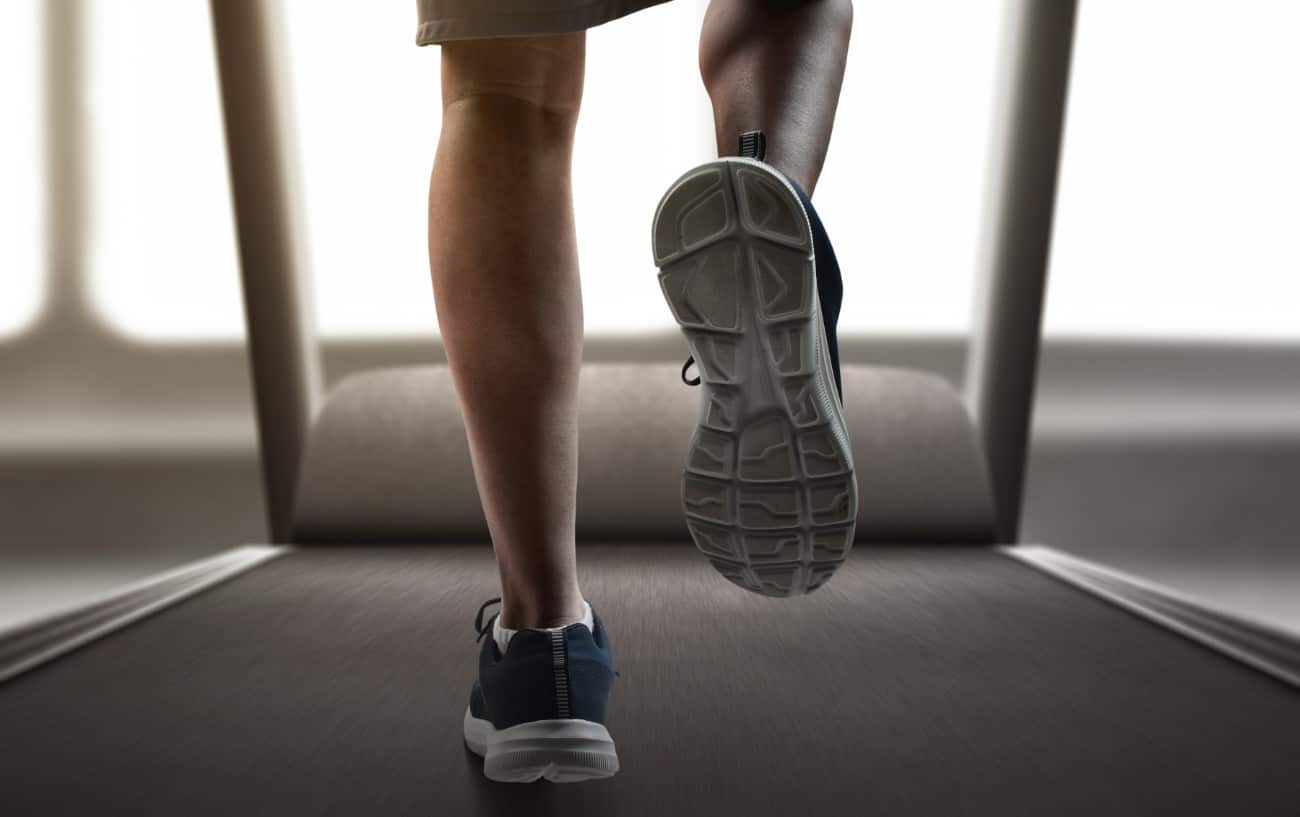
#2: Curved Treadmills
Relatively new to the market, curved treadmills are self-powered and use no electricity. The belt runs over the curved deck and can move faster than the belt on a manual treadmill with a flat deck. This makes it a better choice if you really want to pick up some speed during your workout.
Many users find that running on a curved treadmill feels very natural. This is because the shape encourages you to run on the balls of your feet, with the height your foot reaches on the curve determining how fast the belt will move.
Studies have demonstrated that using a curved treadmill can increase your heart rate, oxygen uptake, and running cadence (stride rate or steps per minute) compared to running on a motorized model. Additionally, the ergonomic U-shaped design helps reduce stress on your joints, giving you a far more comfortable running experience.
As with all manual types of treadmills, curved models have very few ‘extras’ or moving parts that can go wrong. This means they generally last longer than motorized models and are less likely to require costly repairs.
– Best Curved Treadmill – Assault Fitness AirRunner –

If you are looking for an exceptionally durable machine capable of handling up to 350 lb in weight, look no further than the popular Assault Fitness AirRunner.
It boasts a solid steel frame and handrails, with a commercial grade slat belt designed to last an impressive 150,000 miles!
Check out our full review of the Assault AirRunner here!
Pros:
- Wheels for transportation
- Compact footprint and – at 280 lb – lighter than comparable models
- Robust warranty
Cons:
- The functions on the monitor are very limited
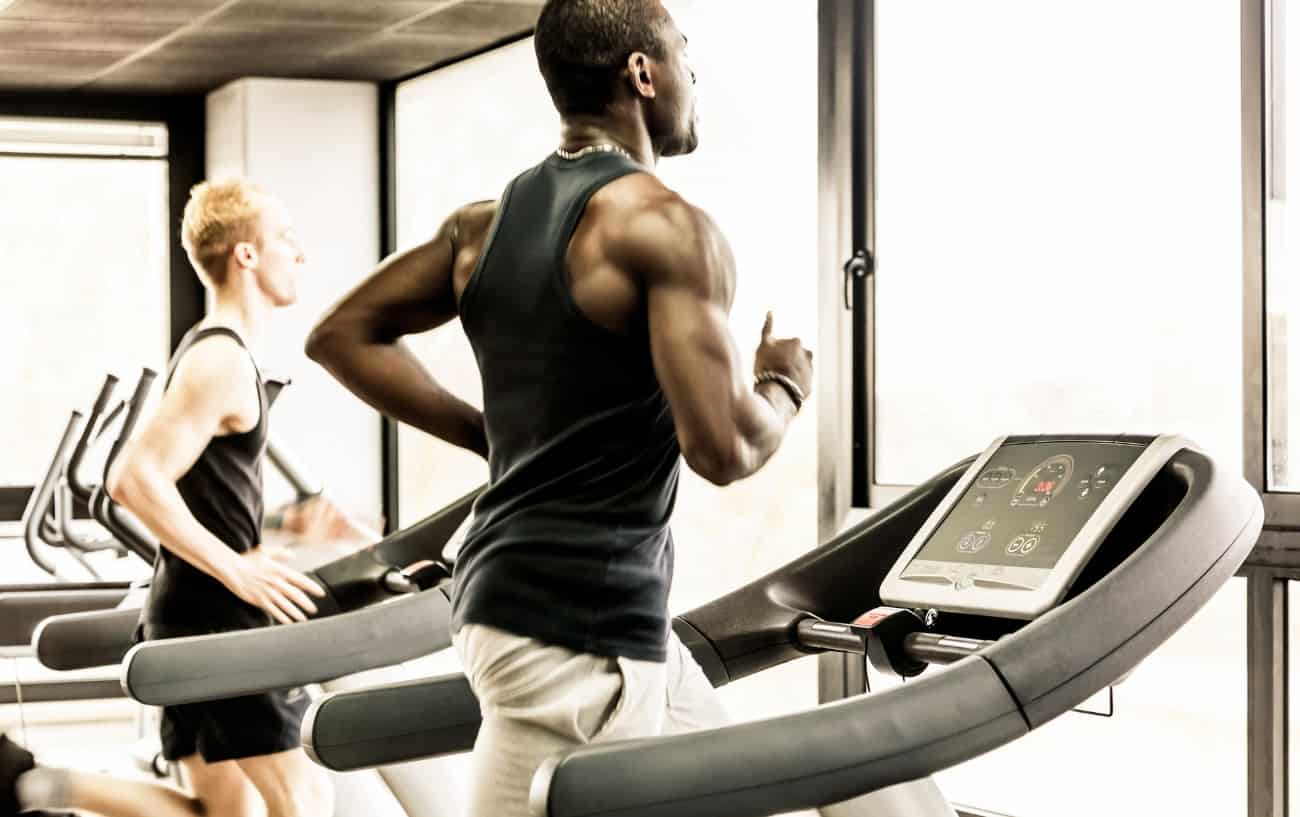
#3: Motorized Treadmills
Motorized or electric models are the most popular types of treadmills for working out at home.
Depending on the model you choose, motorized treadmills can provide the versatility and features you need to significantly enhance your running experience. You can change speed at just the touch of a button, with some machines featuring built-in programs that will adjust your pace automatically.
Many models have an incline feature – sometimes automatic – to make your run more challenging. High-end models may offer a decline too, which simulates downhill running.
Some even include advanced tech features like Bluetooth compatibility and speaker systems. These can be great for motivation, allowing you to stream workout programs on your tablet or listen to your favorite playlist as you run.
Motorized treadmills also make it easy to monitor your stats, many offering large, LCD screens displaying your running metrics.
It is important to be clear about how you want to use your treadmill before choosing a suitable motorized model. Factors such as the belt size and maximum speed of the machine will determine whether the treadmill is better for walking, jogging, or running. See our Guide to Buying a Treadmill for more information.
Motorized treadmills – particularly the very high-quality, commercial-grade models – can be bulky and heavy. Subsequently, they tend to be far sturdier than their manual counterparts, with higher weight capacities that make them suited to a broader variety of users.
– Best Motorized Treadmill – The NordicTrack x32i Incline Treadmill –
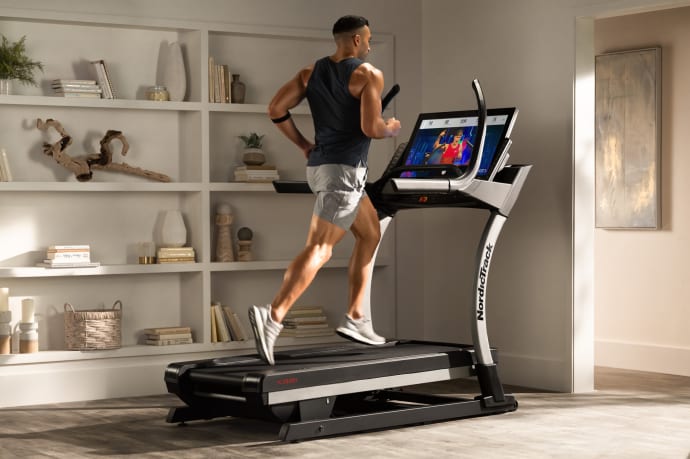
This is not a budget treadmill by any means, but its high price tag reflects its exceptional quality and impressive tech features.
Inclining to 40%, this is a machine capable of delivering an unparalleled workout, with a 4.25 CHP DurX™ Commercial Plus Motor providing the power you need. The 22” wide by 65” long running deck gives you plenty of space for sprinting, even if you are particularly tall or your stride is long.
Pros:
- Large, interactive HD Touchscreen with vibrant graphics
- Compatible with the iFit app for limitless workout variety (subscription required after 30 days)
- Bluetooth headphone connectivity and 2 digitally amplified speakers
Cons:
- Requires internet connectivity in order to operate
- Very heavy – needs a dedicated space
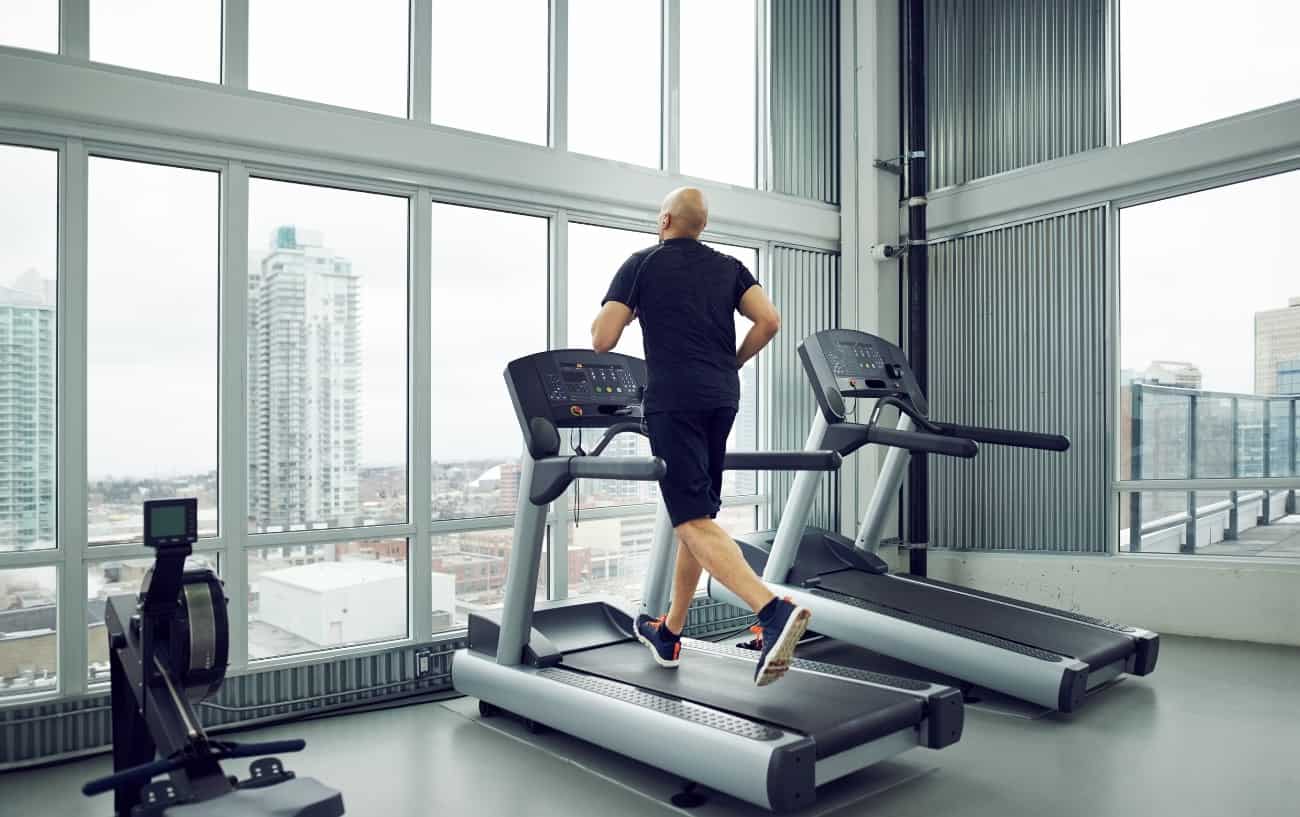
#4: Folding Treadmills
Buying a motorized treadmill once meant finding a dedicated space in your home in which to set it up. But manufacturers now recognize that this isn’t an option for everyone. That means there are now lots of high-quality, folding models to choose from, many of which are a lot more robust and stable than you might imagine.
For ease of use, most high-quality folding treadmills will come with the technology to assist you in effortlessly raising and lowering the deck.
This means that the frame and running platform can be built with the weight and strength needed for stability, yet still be easy enough for you to fold and unfold daily.
It is rare to find a folding model that folds completely flat. Those that do tend to be lighter weight desk treadmills (more on those below). Instead, there’s usually an angle between the deck and the frame, meaning that most folding treadmills are designed to store vertically.
Folding treadmills vary quite a bit in weight. If you need one that you can move from room to room, then look for a model that is light enough for one person to manage. It should also have wheels for transportation.
If you choose a more heavy-duty model, then ideally you should position it in the room in which you’ll be using it. You can then fold the deck upwards to create space in the room.
– Best Folding Treadmill – The XTERRA Fitness TR150 Folding Treadmill –

We’ve chosen this model as our favorite as it is one of the most affordable models we have tried – and also one of the most robust.
The no-frills console is easy to use and displays all your running metrics, whilst the maximum speed of 10 mph makes the unit suitable for everything from walking to recreational running.
You can see our in-depth review of this model here.
Pros:
- 3 manual incline settings
- Built-in pulse sensors for heart-rate monitoring
- Lightweight but durable
Cons:
- No Bluetooth compatibility
- No sound system
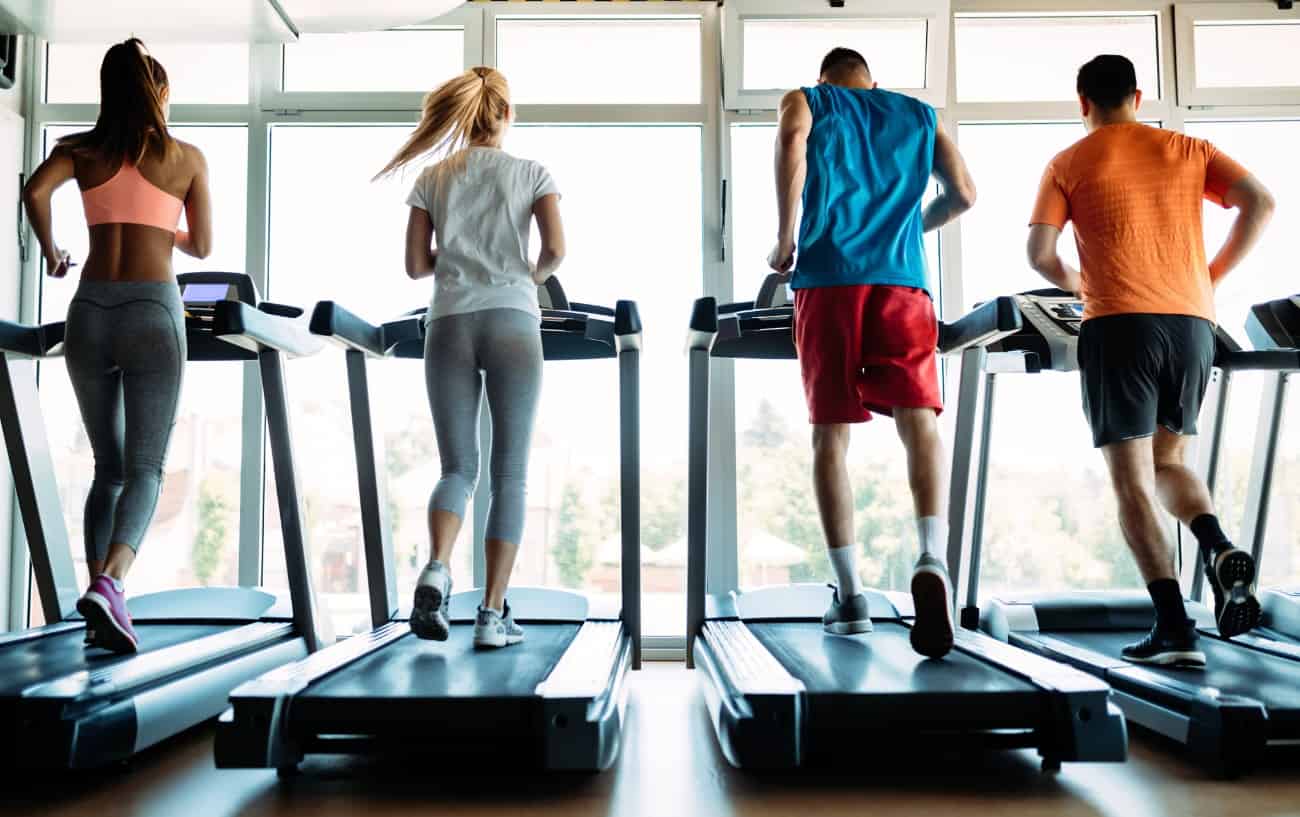
#5: Desk Treadmills
A desk treadmill is a great solution for people who spend a lot of time at a desk and don’t walk enough during the day.
Also known as under desk treadmills, these machines are slim and simply designed, with no console or handrails.
This means that they can be easily placed under your desk and allow you to walk as you work. Most have a fairly limited maximum speed and are not intended for jogging or running (either of which would be pretty difficult to do whilst working anyway!).
You may also come across 2 in 1 models. More costly than regular desk treadmills, these can be used for jogging but feature a foldable bar that allows you to convert them to an under-desk model for walking. A 2 in 1 model is a good choice if you require greater versatility from your machine.
Science supports the fact that sitting down all day is detrimental to your health and experts recommend that active workstations are the answer. A desk treadmill is one of the most effective ways to keep your body moving throughout the day, even when you don’t have free time to exercise!
– Best Desk Treadmill – The UREVO 2 in 1 Under Desk Treadmill –

With a non-assembly design and weight capacity of 265 pounds, this sturdy yet compact treadmill is ready to use right out of the box!
It reaches speeds of up to 7.6 mph so you can use it for jogging when you need a more challenging workout. But it is also lightweight and portable enough to be easily placed under your desk, with a smooth, quiet motion that won’t disturb your workflow.
Pros:
- Folds flat enough to store under the bed
- Remote control for use when bar is folded
- Slot for phone to stream videos when bar is upright
Cons:
- No incline
- No pause button on the remote control
#6: Rehabilitation Treadmills
Treadmills have been shown to be very useful in rehabilitation following serious illness.
Indeed, there is evidence that treadmill use can be helpful for anyone who has suffered a stroke, improving both their endurance and walking speed. A separate study yielded similar results, also revealing that treadmill training improves cardiovascular fitness in patients with chronic stroke.
Meanwhile, researchers have found that treadmill walking can be useful for people with Parkinson’s disease, improving their stride length and gait.
There are various treadmills designed for rehabilitation, some with very specific features and usually only available in medical facilities.
However, there are also models available for home use, ideal for anyone with long-term health issues or for seniors seeking to maintain or improve their overall fitness levels. These tend to have extended handrails for additional support, a low step-on height for comfort, and non-slip grips.
Note: You should always check with your medical provider before using a treadmill for rehabilitation purposes.
– Best Rehabilitation Treadmill – EXERPEUTIC TF2000 Recovery Fitness Walking Treadmill –

Specifically designed for anyone recovering from an injury, this model features superior cushioning to reduce impact. This helps prevent stress on the knees and ankles, making it comfortable to use.
The handrails are among the longest you’ll see on any treadmill, giving you the confidence to train, even if you have issues with stability.
Pros:
- A highly visual backlit LCD display
- Low deck height of 5 inches to make getting on and off easy
- White dashes to clearly show when the belt is moving
Cons:
- Large footprint
- No media rack for a phone or tablet

types of treadmills explained: Key Takeaways
Choosing the right treadmill for home use depends on a variety of factors. The best model for you will be the one that fits comfortably within your budget and the space you have available. It should also provide the features you need to make exercise enjoyable – because motivation is key!
This might mean superior tech, allowing you to follow streamed workouts or built-in programs. Or it may mean choosing a machine offering a more challenging workout, with features like automatic inclines and high max speeds.
We hope this guide has helped you understand the different types of treadmills available and which will suit you best.
How Do You Know If You Have Proper Running Form?
Poor running form can mean that your technique is inefficient and may even lead to injury. But how do you know if your form is correct? What can you do to improve it?
Find out here, with our 8 tips for effortlessly achieving perfect form.



